6 futuristic cities under construction around world
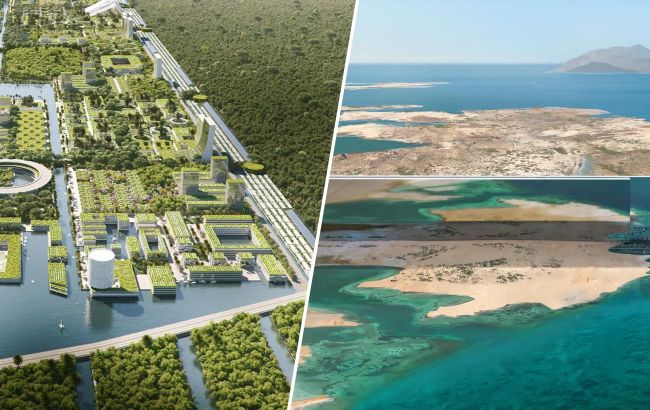 The most futuristic cities under construction around the world (collage: RBC-Ukraine)
The most futuristic cities under construction around the world (collage: RBC-Ukraine)
The world stands on the brink of a new era of urbanization, where the cities of the future promise to reshape our concept of living and technology. These cities are being built from scratch, utilizing cutting-edge ideas in sustainability, architecture, and technology, according to the online platform Architectural Digest.
The Line (Neom, Saudi Arabia)
What it will look like
The Line is perhaps the most ambitious of all futuristic urban projects. As part of Saudi Arabia's $500 billion Neom project, The Line is envisioned as a linear city stretching 170 kilometers across the desert.
The city will consist of two parallel skyscrapers covered in mirrors, 200 meters wide and 500 meters high. Its design eliminates the need for cars, as all essential services will be within a five-minute walk. High-speed transport will carry residents from one end to the other in just 20 minutes.
Who will live there
The Line aims to house nine million people, focusing on attracting global talents, entrepreneurs, and innovators.
The city is designed to operate on 100 percent renewable energy, making it appealing to those committed to a sustainable lifestyle. The emphasis on artificial intelligence and biotechnology is likely to attract professionals from these fields.
.jpg)
The Line (photo: NEOM)
Telosa (United States)
What it will look like
Founded by billionaire Marc Lore, Telosa is conceived as a city of the future in the American desert. Spanning 150,000 acres, Telosa is designed as a sustainable metropolis that can accommodate up to five million people.
The city will feature a circular layout with a massive skyscraper, known as the Equitism Tower, at its center. This building will serve as a beacon for the city in the areas of equality, sustainability, and community.
Who will live there
Telosa is planned as an inclusive community where residents have equal opportunities to thrive. The city's governance model, called Equitism, focuses on collective land ownership, where increases in land value benefit the community.
The city seeks to attract a diverse range of people, including young professionals, families, and retirees, all united by a commitment to sustainable and equitable living.
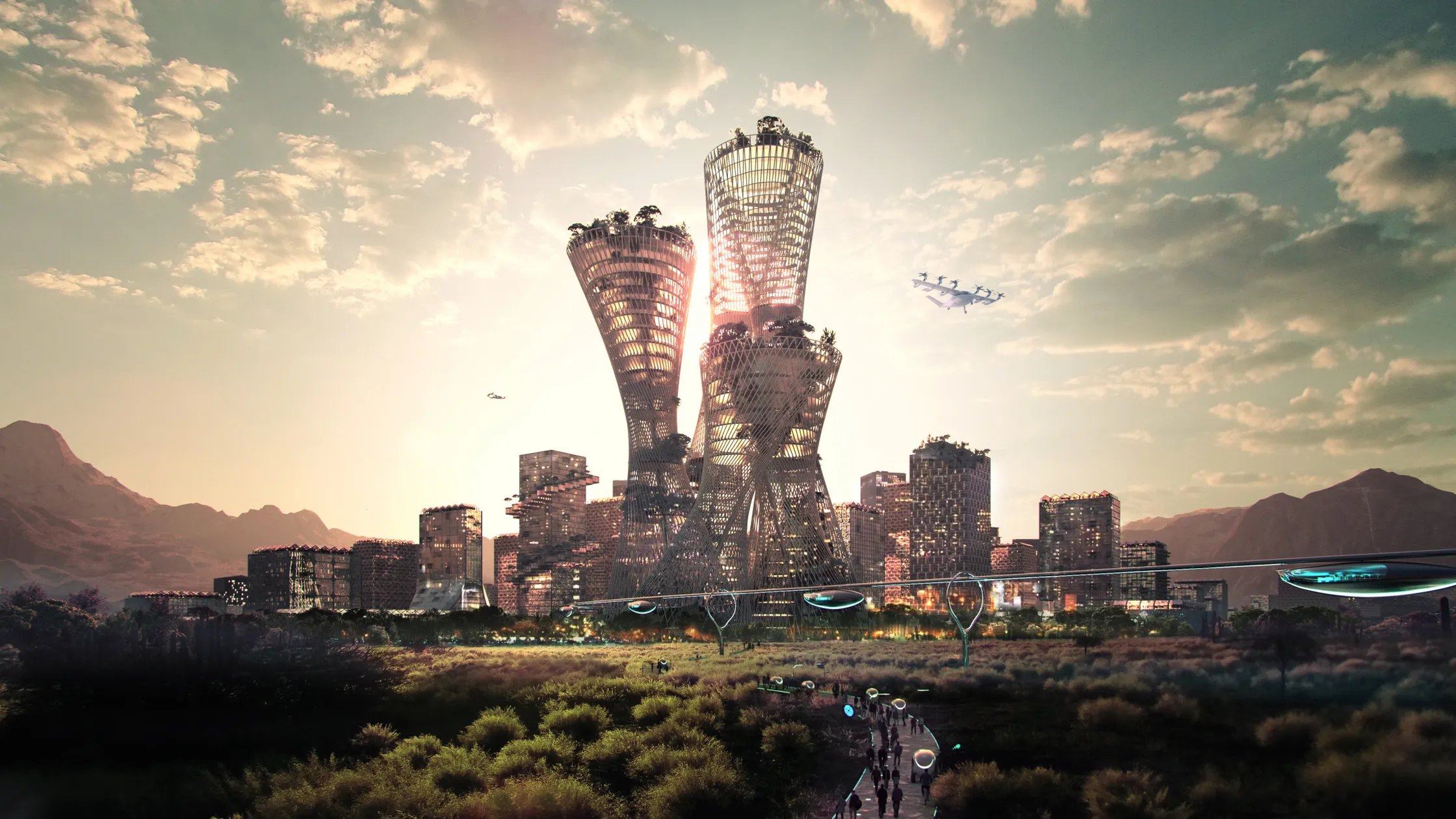
Telosa (photo: BIG)
Amaravati (India)
What it will look like
Amaravati, the new capital of the Indian state of Andhra Pradesh, is envisioned as a high-tech, sustainable metropolis. The city's design includes extensive green spaces, wide boulevards, and modern infrastructure.
Amaravati is planned as a smart city with intelligent traffic management, waste disposal, and water resource management systems. The city is also equipped with energy-efficient buildings and is oriented towards renewable energy sources.
Who will live there
Amaravati is intended to become a governmental and business hub, attracting civil servants, business professionals, and educators. The city's smart infrastructure and modern amenities are designed to provide a high quality of life for its residents. Amaravati also aspires to be a center for education and research, drawing students and scholars from across India and beyond.
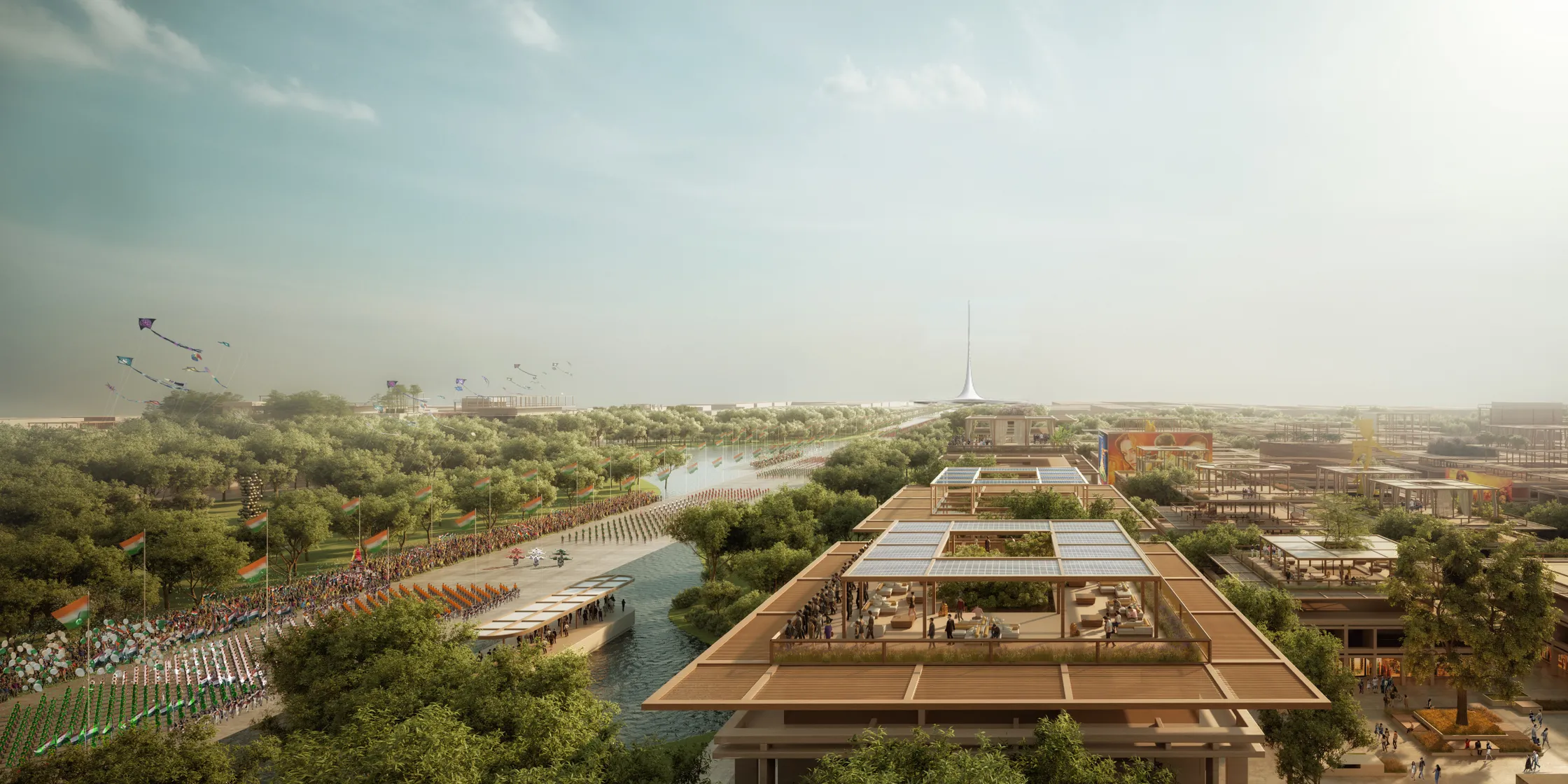
Amaravati (photo: Foster+Partners)
Smart Forest City (Cancún, Mexico)
What it will look like
Smart Forest City, envisioned by Italian architect Stefano Boeri, is designed as a model of sustainable urban development for the 21st century. Located near Cancún, this city will be built on 557 hectares of land, housing around 130,000 residents.
The project will function as a vast botanical garden with greenery designed to absorb 116,000 tons of carbon dioxide annually.
The city will be equipped with advanced renewable energy systems, including solar panels and water channels for harnessing natural resources. A key aspect of Smart Forest City is its self-sufficiency, with a focus on producing more energy than it consumes.
Who will live there
Smart Forest City is designed to attract a diverse population, including researchers, students, and professionals from various fields who are interested in living in a sustainable, high-tech environment.
The integration of nature with urban living also makes it an attractive place for families seeking a tranquil yet modern setting.
.jpg)
Smart Forest City (photo: Architectural Digest)
Oceanix Busan (South Korea)
What it will look like
Oceanix Busan is an innovative project envisioned as the world’s first sustainable floating city. Located off the coast of Busan, this water-based metropolis will consist of interconnected platforms, each supporting different urban functions, such as residential areas, research centers, and green spaces.
The city is designed to be resilient to rising sea levels and will feature eco-friendly architecture, solar energy, and innovative waste management systems.
Who will live there
Oceanix Busan aims to provide a sustainable living environment for a diverse population, including climate refugees, urban dwellers seeking a low-carbon lifestyle, and researchers studying marine ecosystems.
The city will also cater to tourists drawn to its unique floating architecture and model of sustainable living.
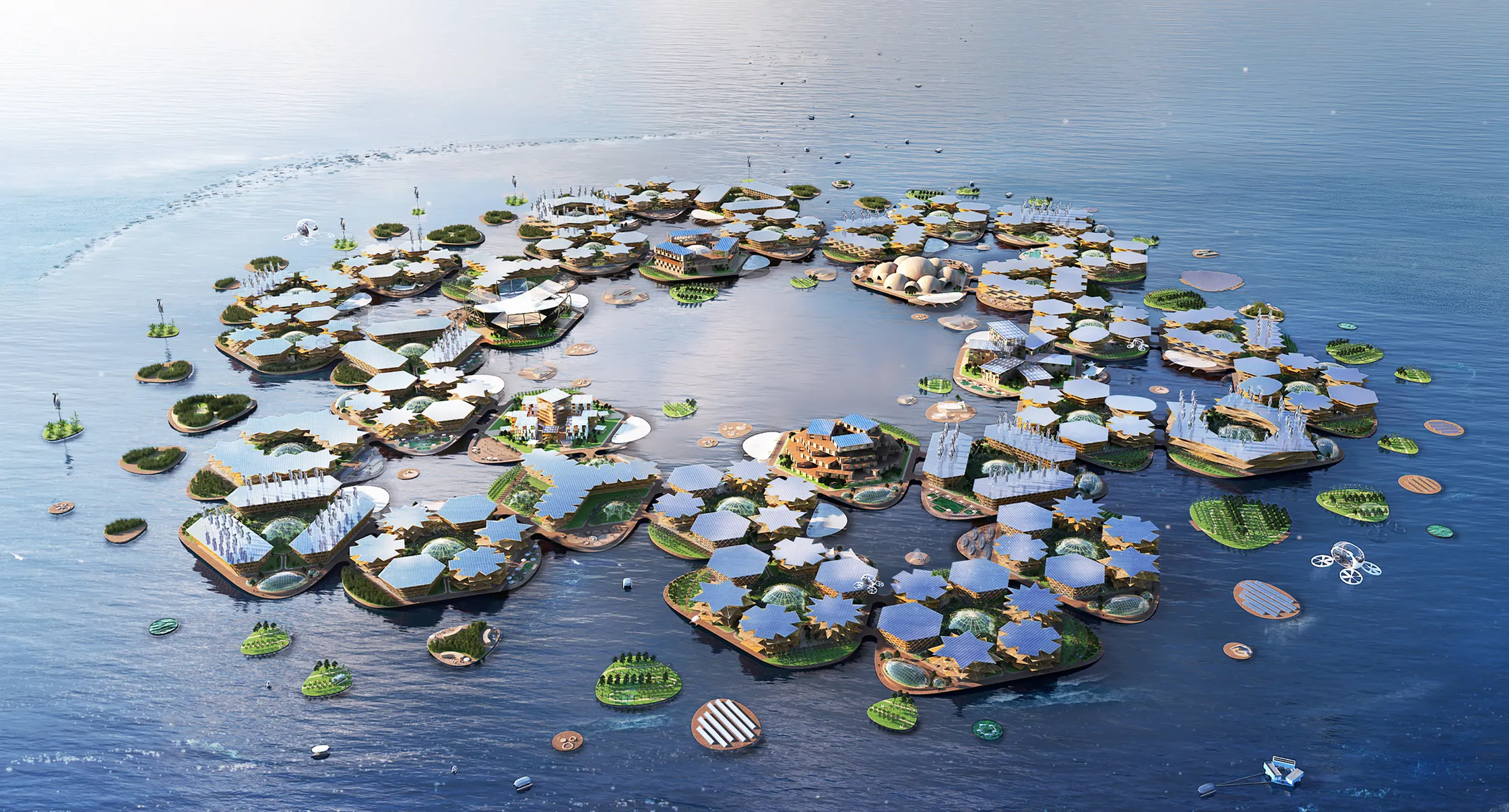
Oceanix Busan (photo: BIG)
Chengdu Sky Valley (China)
What it will look like
Chengdu Sky Valley is an ambitious project presented as a futuristic urban oasis that combines modern architecture with vast natural landscapes.
Located in Sichuan province, this city will feature a mix of residential towers, research institutions, and cultural centers, surrounded by lush greenery and integrated with sustainable technologies.
The design emphasizes harmony with the surrounding environment, including terraced gardens, vertical farming, and green roofs to improve air quality and reduce urban heat.
Who will live there
Chengdu Sky Valley is designed for a diverse group of residents, including technology professionals, researchers, and families seeking a modern yet eco-friendly lifestyle.
The city will also attract tourists and scholars interested in sustainable urban development and innovative living solutions.
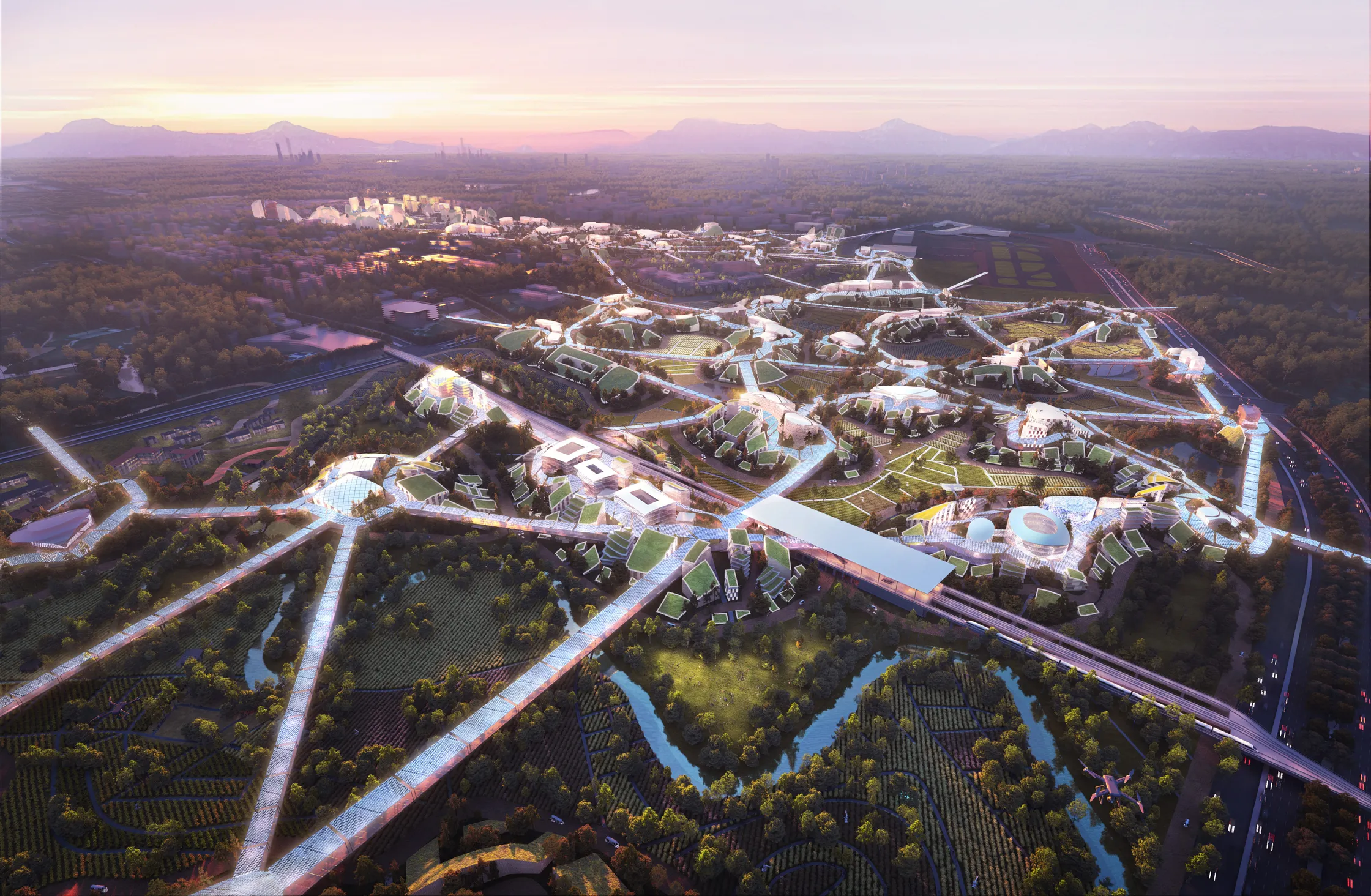
Chengdu Sky Valley (photo: MRVD)
Additionally, we have reported on which cities scientists believe could be underwater by 2050.

